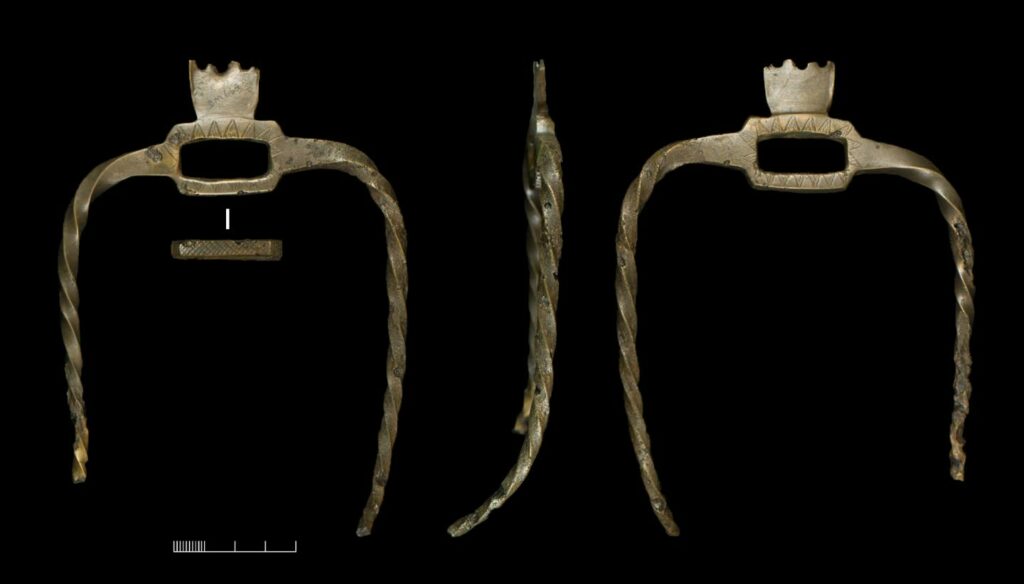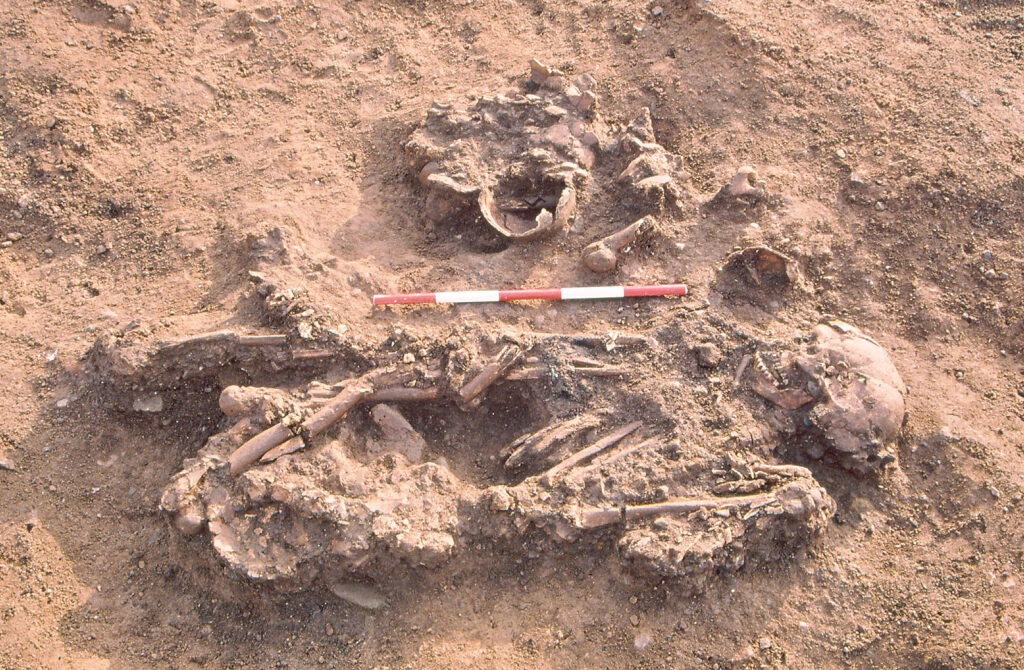
It is common for people to cherish objects belonging to a dear person who passed away so that they might honor their memory and remember them fondly. Humans have been doing this for ages — even if some ancient traditions may seem gruesome by today’s standards.
In a recent study, archaeologists in the UK highlight how some Bronze Age cultures curated the remains of their dead, which they retained as relics over subsequent generations. For instance, in one particularly extraordinary case, a human thigh bone was crafted into a musical instrument some 4,500 years ago.
“Even in modern secular societies, human remains are seen as particularly powerful objects, and this seems to hold true for people of the Bronze Age. However, they treated and interacted with the dead in ways which are inconceivably macabre to us today,” said lead author, Dr Thomas Booth of the University of Bristol.
Dr. Booth and colleagues performed radiocarbon dating on human remains and artifacts excavated from a burial site close to the iconic Stonehenge site. That’s when they noticed that many of the partial remains buried at the site had been buried a good chunk of time after the person had died. This immediately led to an uneasy conclusion: could these remains have been kept and circulated as heirlooms?
“People seem to have curated the remains of people who had lived within living or cultural memory, and who likely played an important role in their life or their communities, or with whom they had a well-defined relationship, whether that was direct family, a tradesperson, a friend or even an enemy, so they had a relic to remember and perhaps tell stories about them,” said Dr. Booth.

The most striking example is that of a human thigh bone crafted into a flute, which was placed as a grave good at the burial of a man at Wiltshire. The intricately carved and polished flute-bone was found along with other items, including stone and bronze axes, a bone plate, and a tusk. The researchers believed that the buried man must have been acquainted during his lifetime with the person whose thigh bone was turned into a musical instrument.
Archaeologists widely recognize the fact that many Bronze Age cultures circulated artifacts such as jet beads and ceramic vessels over many generations. Occasionally, as this study shows, fragments of human bone were also kept as heirlooms.
“Although fragments of human bone were included as grave goods with the dead, they were also kept in the homes of the living, buried under house floors and even placed on display”, said Professor Joanna Brück, principal investigator on the project, and visiting professor at the University of Bristol’s Department of Anthropology and Archaeology.
“This suggests that Bronze Age people did not view human remains with the sense of horror or disgust that we might feel today.”

The researchers also performed a microcomputer tomography (micro-CT) at the Natural History Museum in order to assess how the bones and bodies were treated before decomposing.
Generally, the dead bodies were treated in similar ways to what archaeologists expected to see from Bronze Age burials. Some had been cremated before being split up into fragments, while “some bones were exhumed after burial, and some had been de-fleshed by being left to decompose on the ground,” Dr. Booth said.
“This suggests that there was no established protocol for the treatment of bodies whose remains were destined to be curated, and the decisions and rites leading to the curation of their remains took place afterwards.”
During the Bronze Age, people employed a wide variety of burial rites, including primary burial, excarnation, cremation, and mummification. These new findings show that the memory of loved ones was cherished outside these traditional contexts, with some human remains regularly kept and circulated amongst the living in a community.
“This study really highlights the strangeness and perhaps the unknowable nature of the distant past from a present-day perspective. It seems the power of these human remains lay in the way they referenced tangible relationships between people in these communities and not as a way of connecting people with a distant mythical past,” said Dr. Booth.
The findings were reported in the journal Antiquity.






